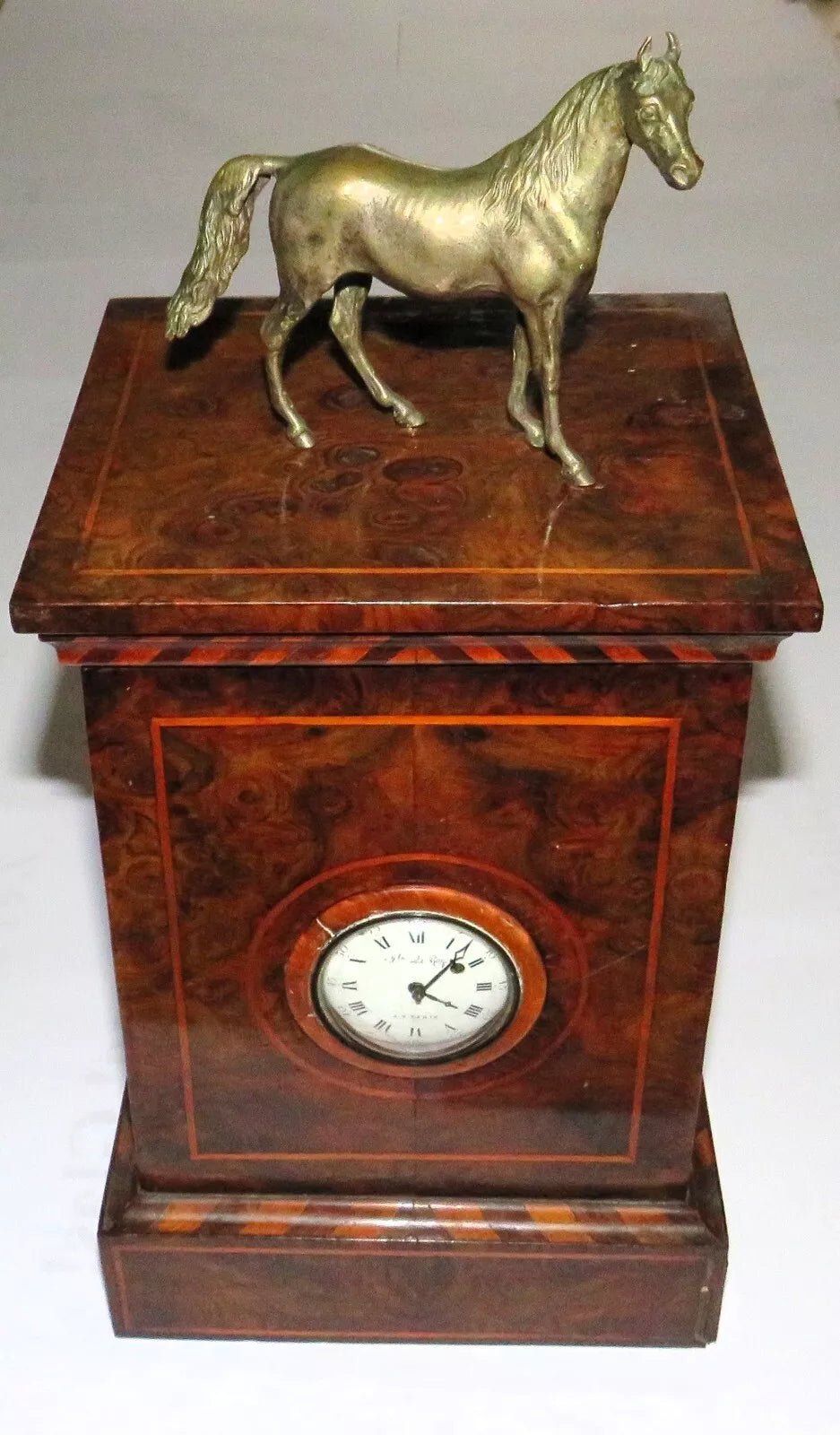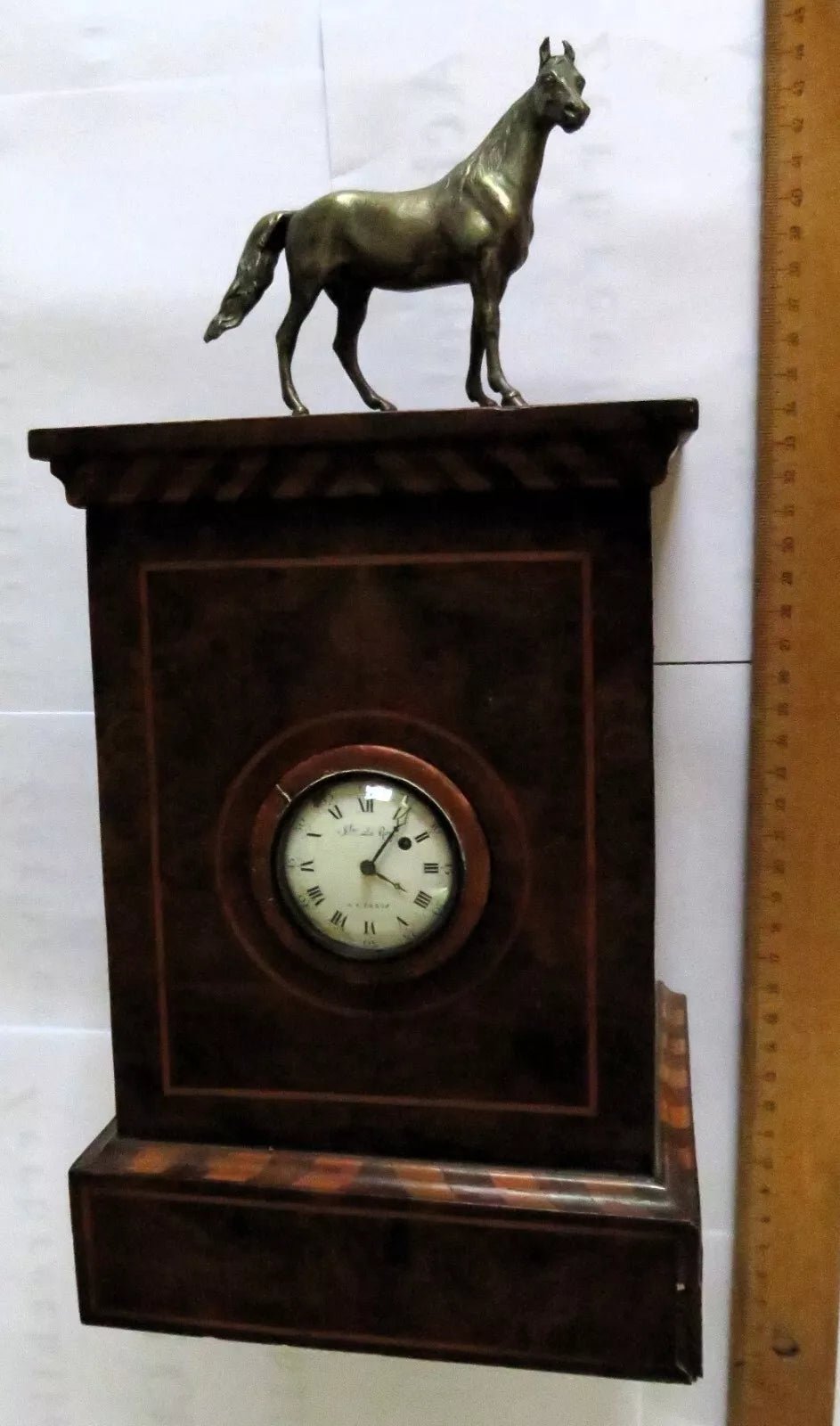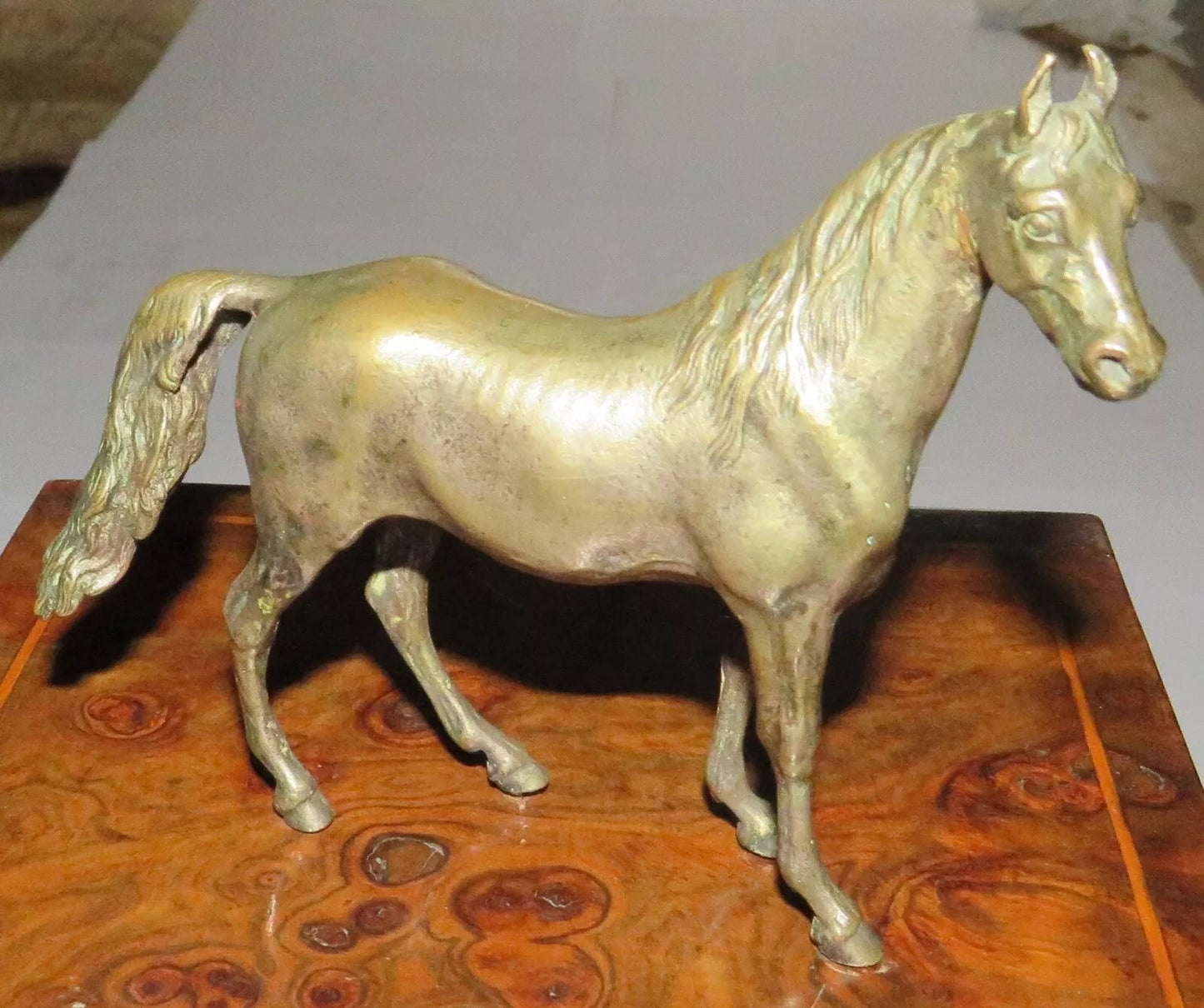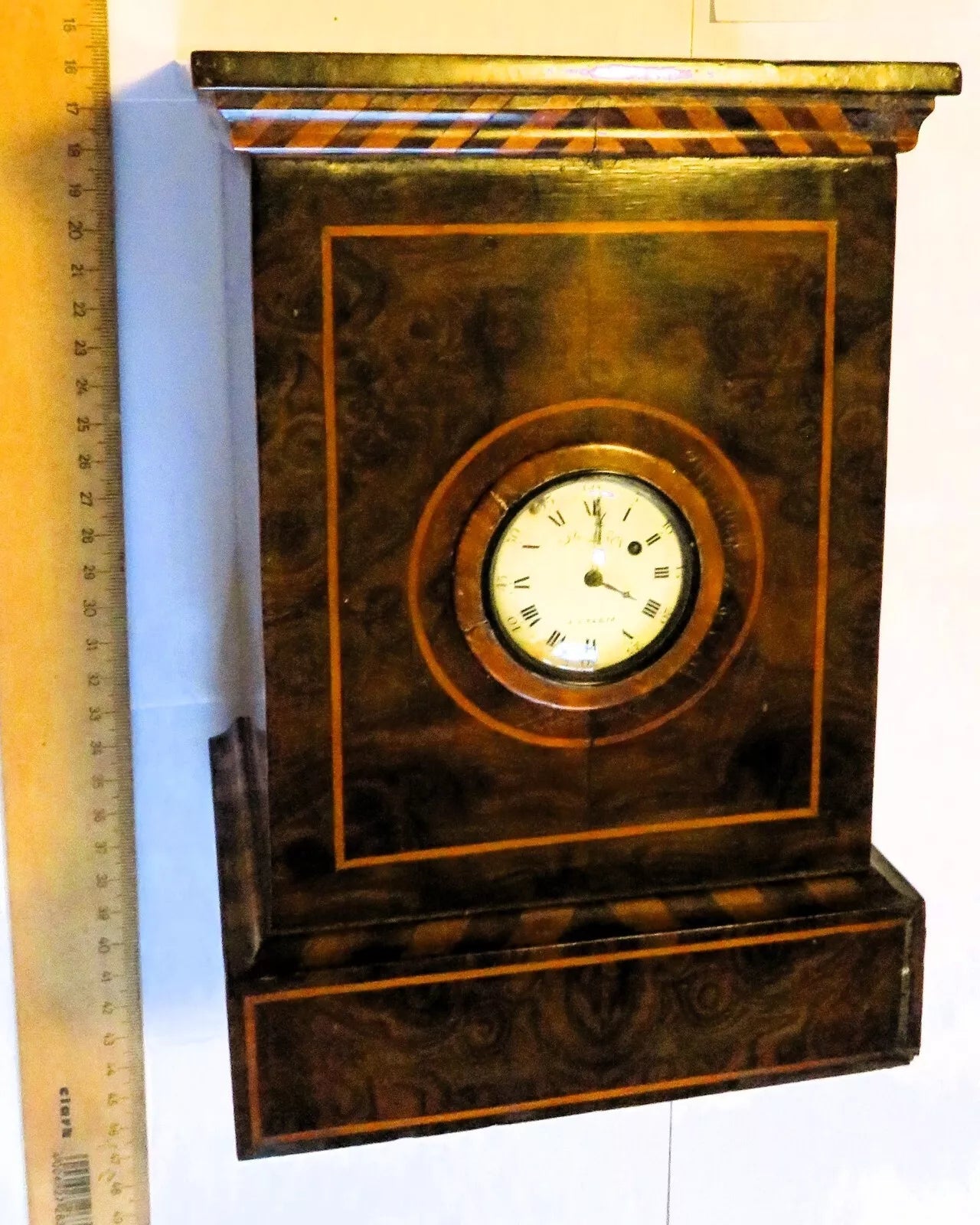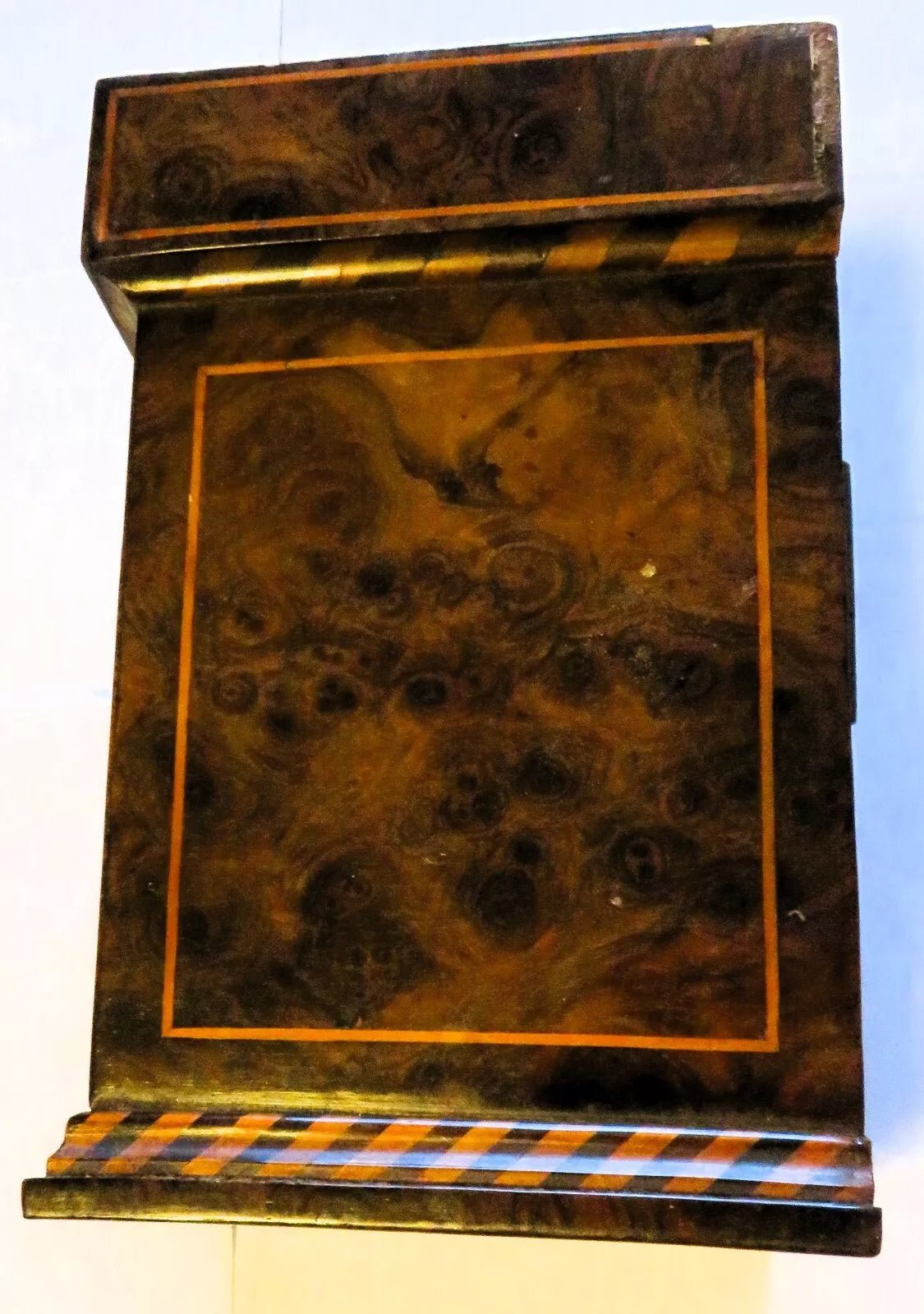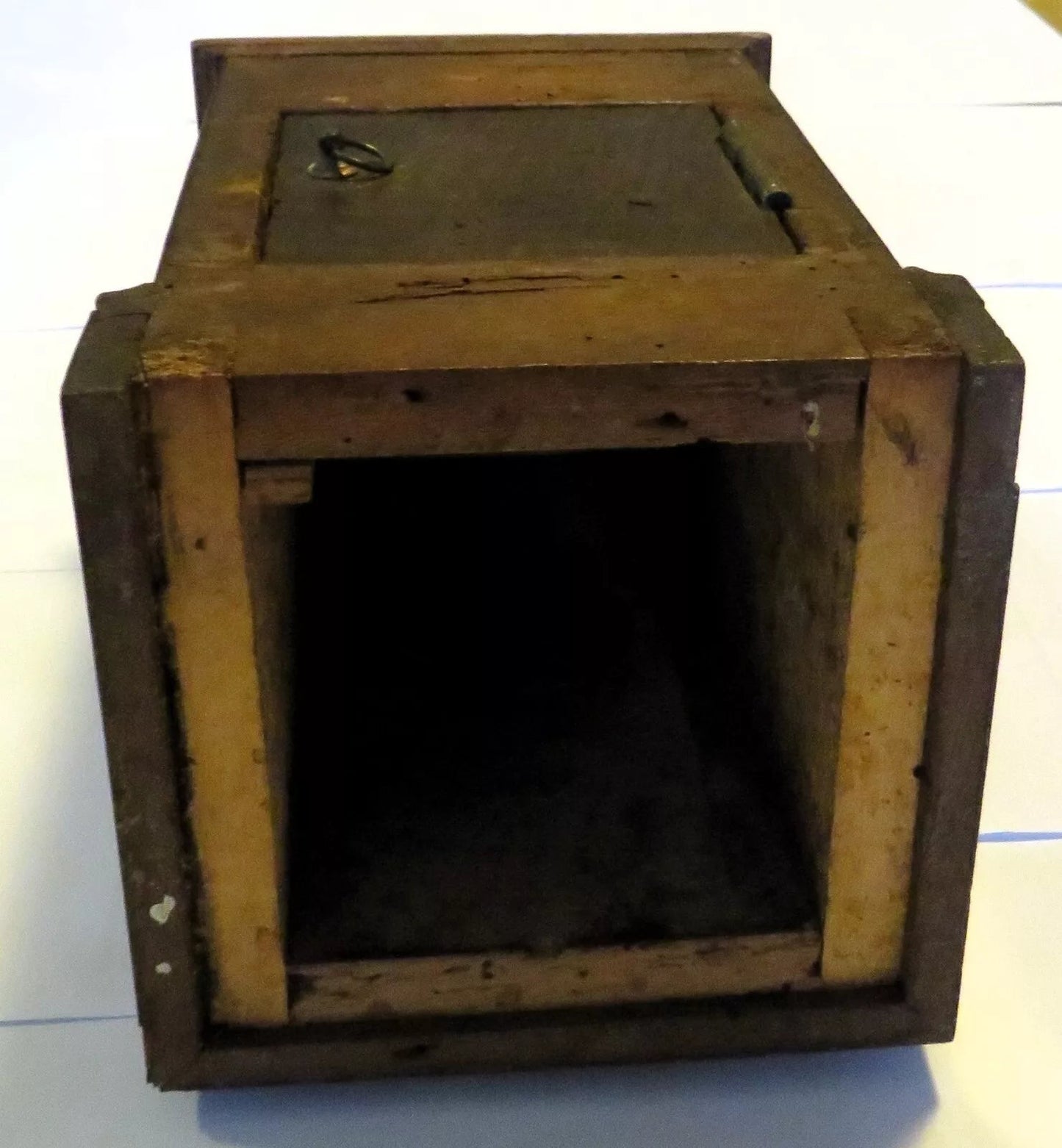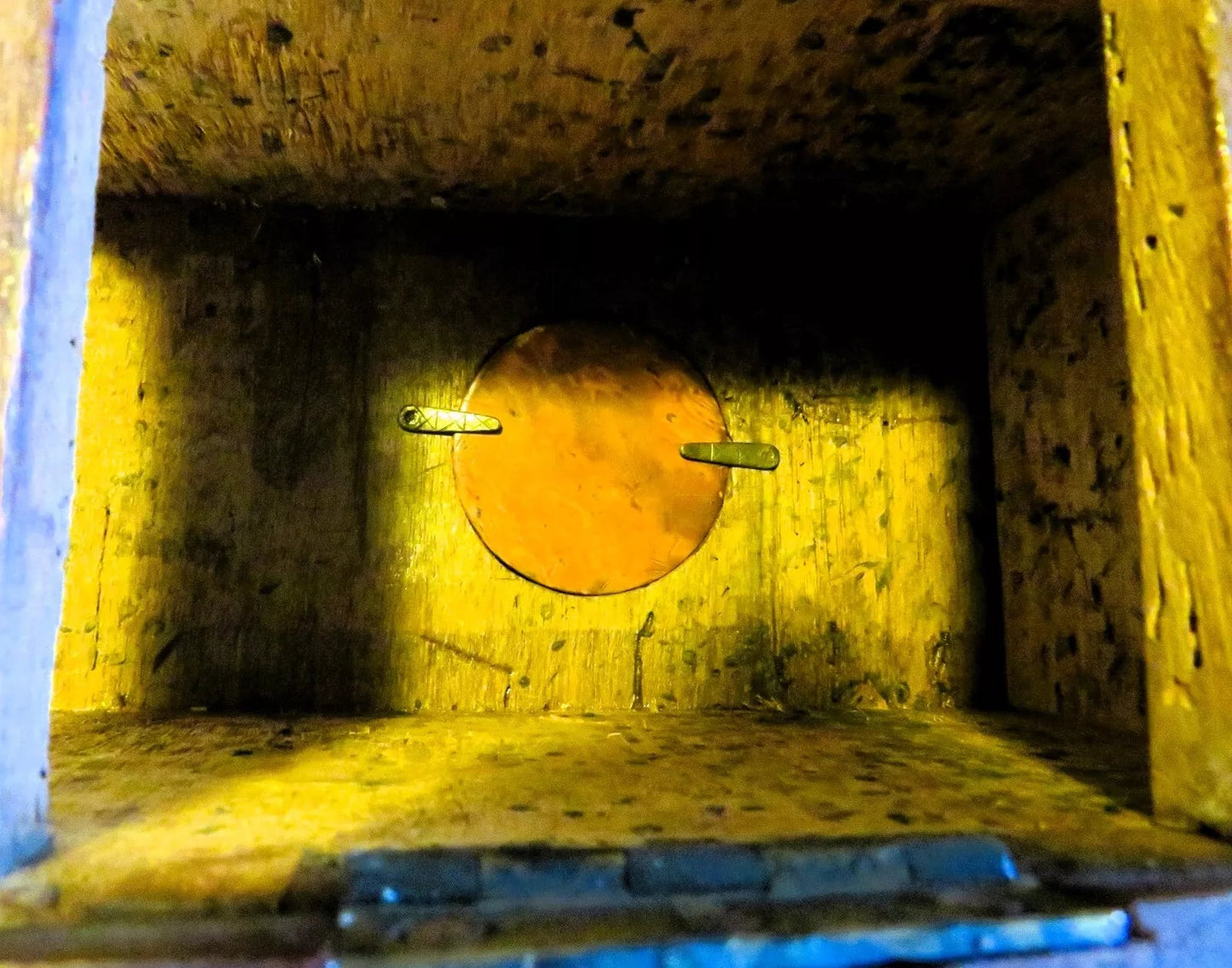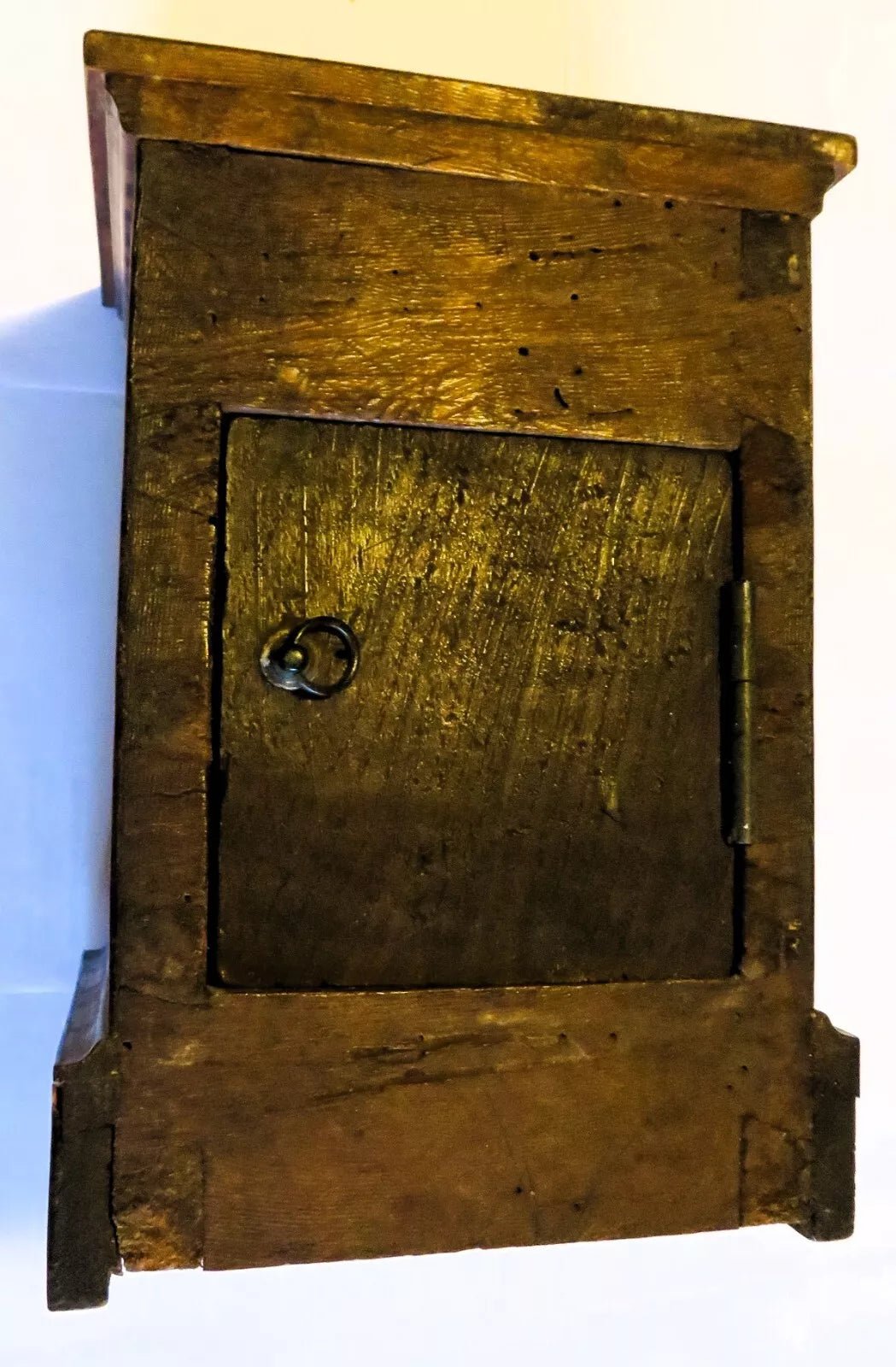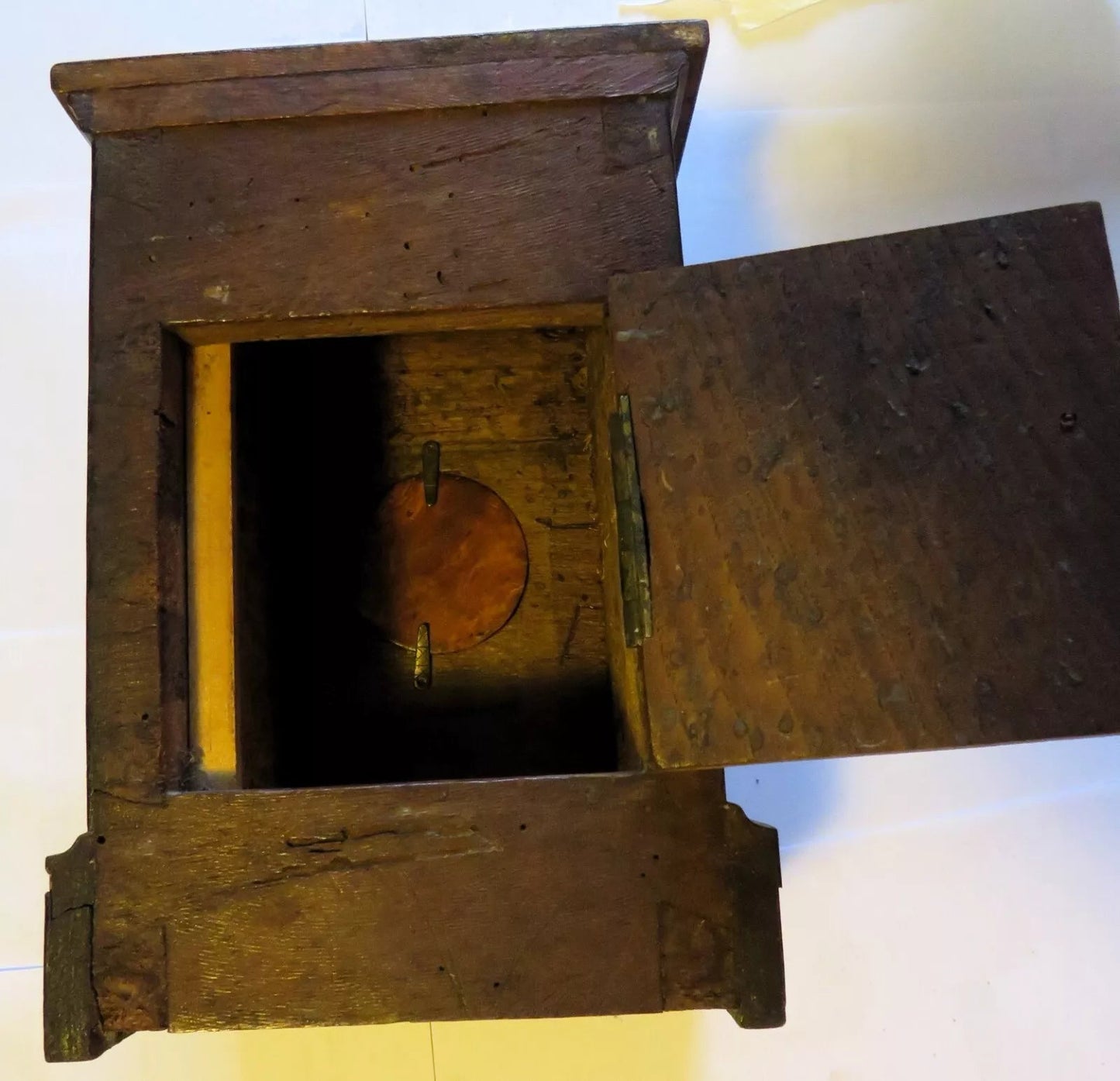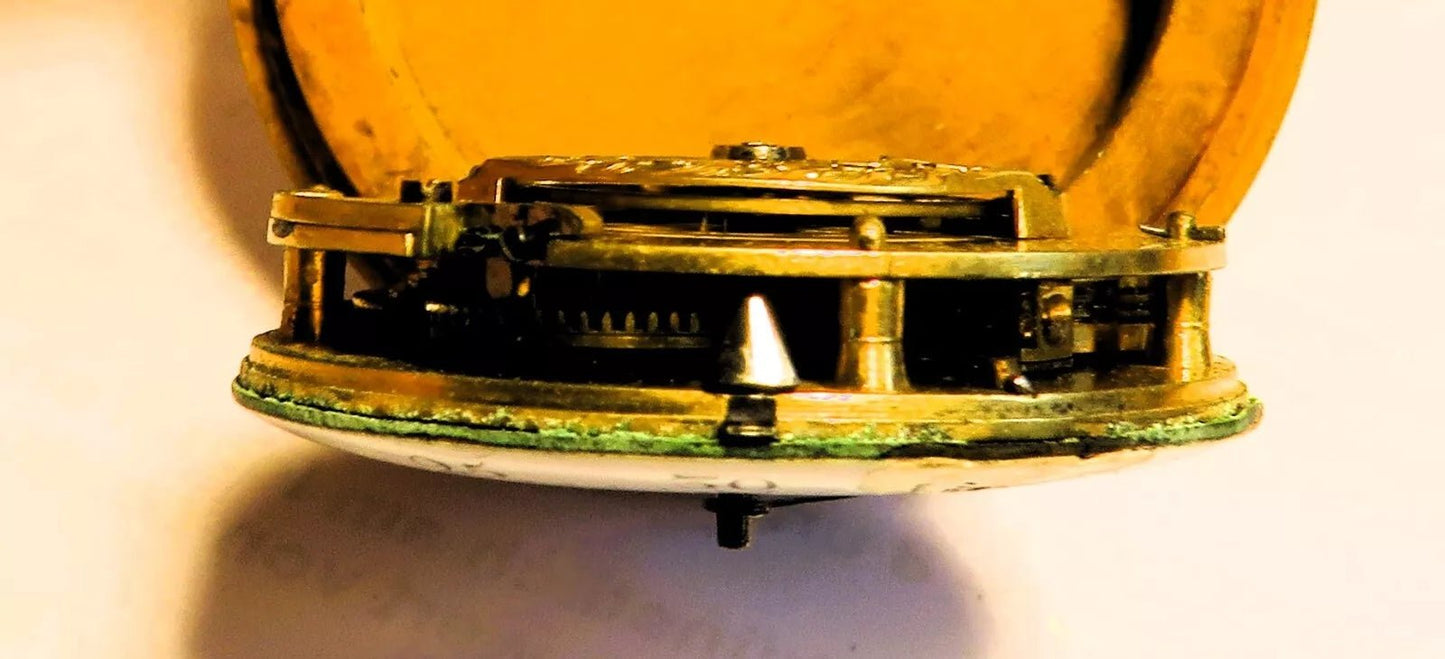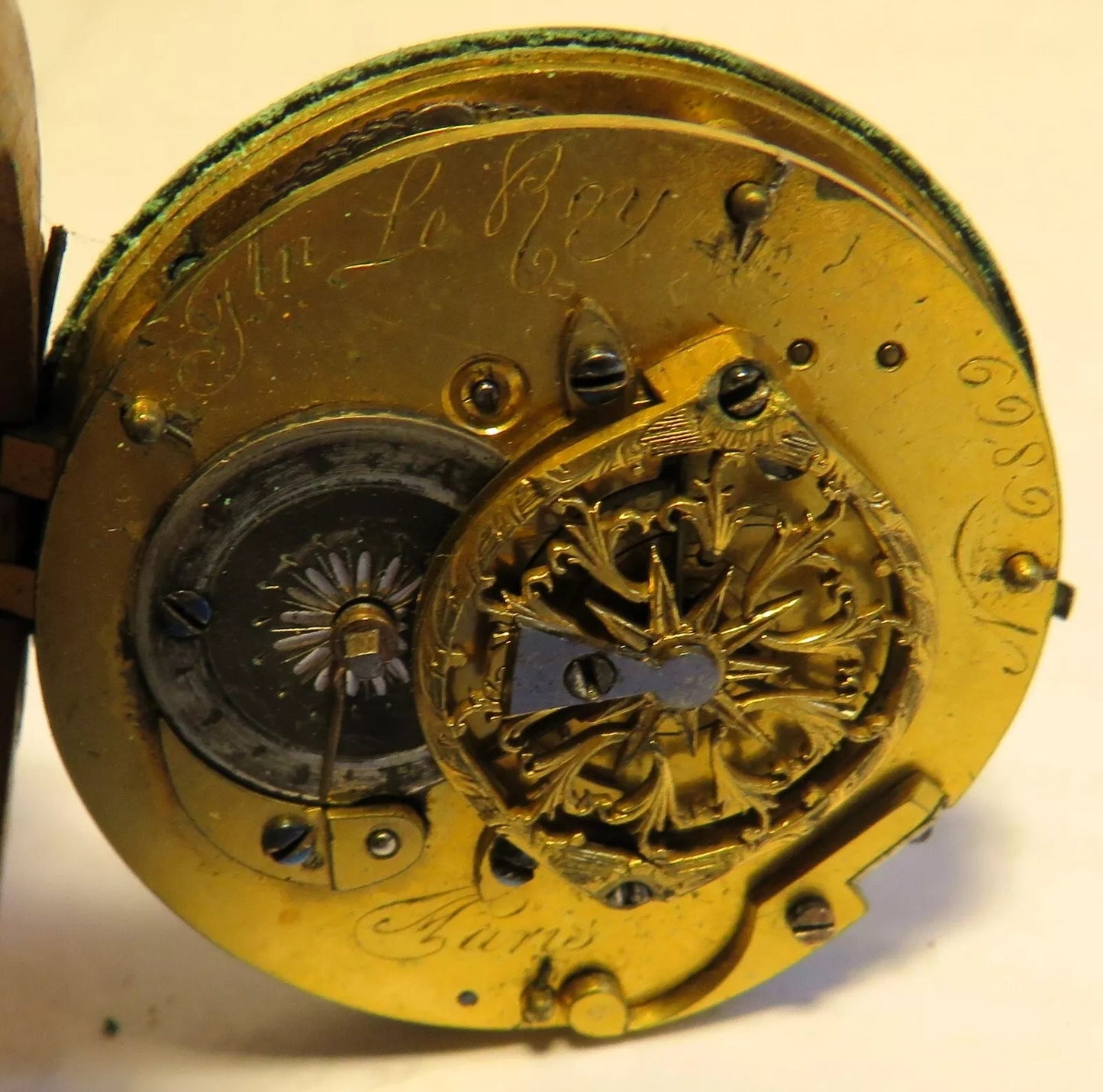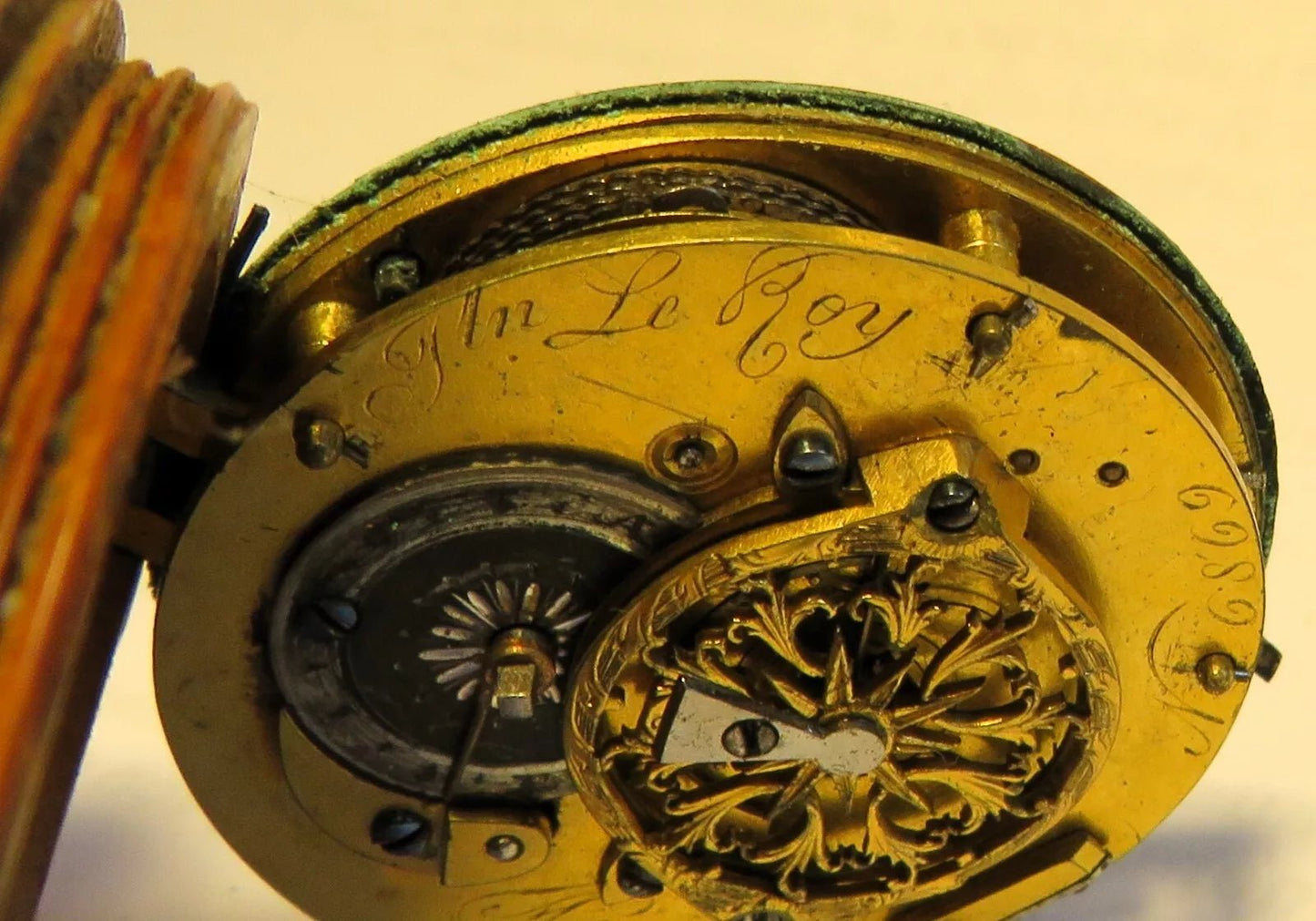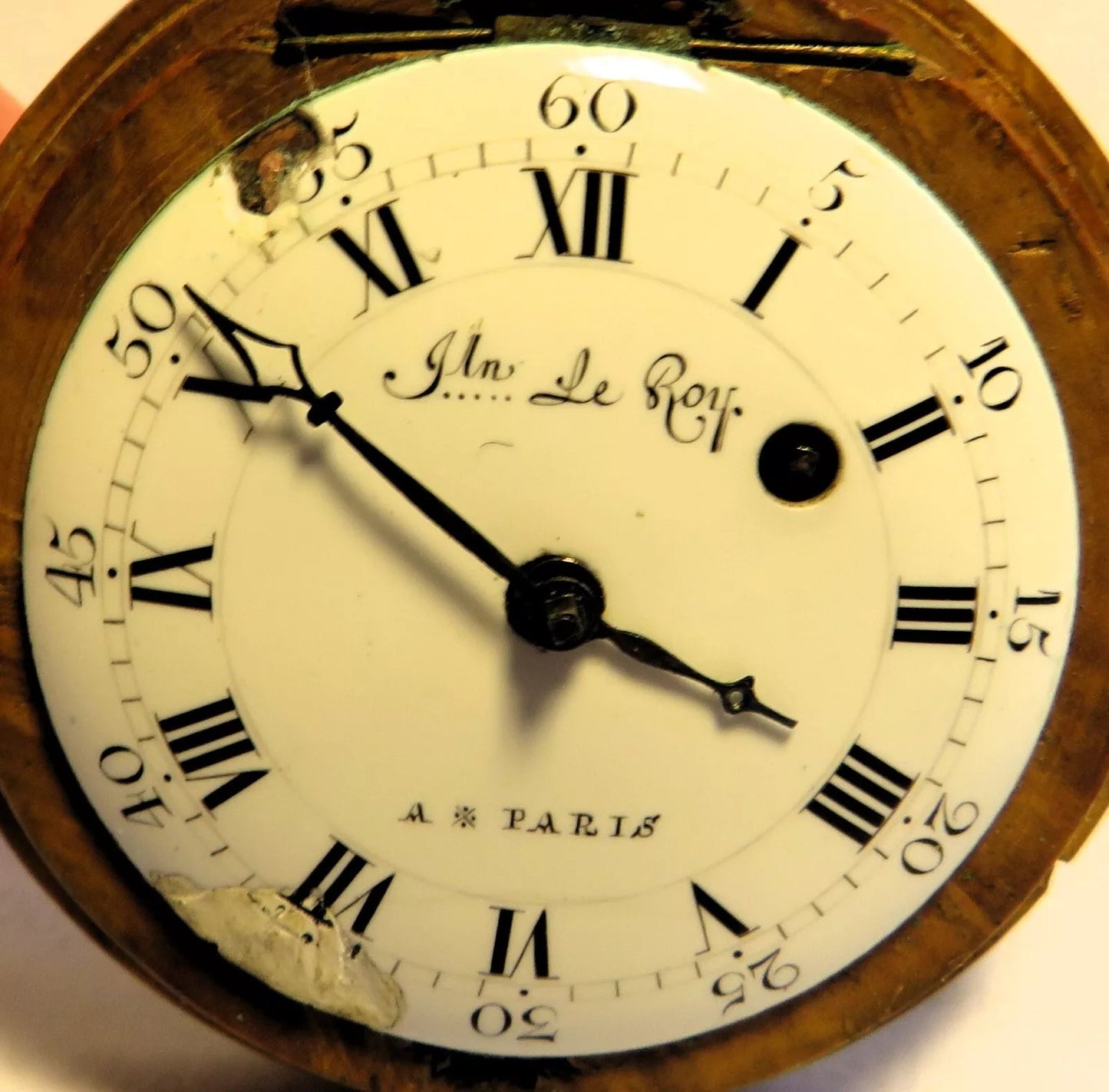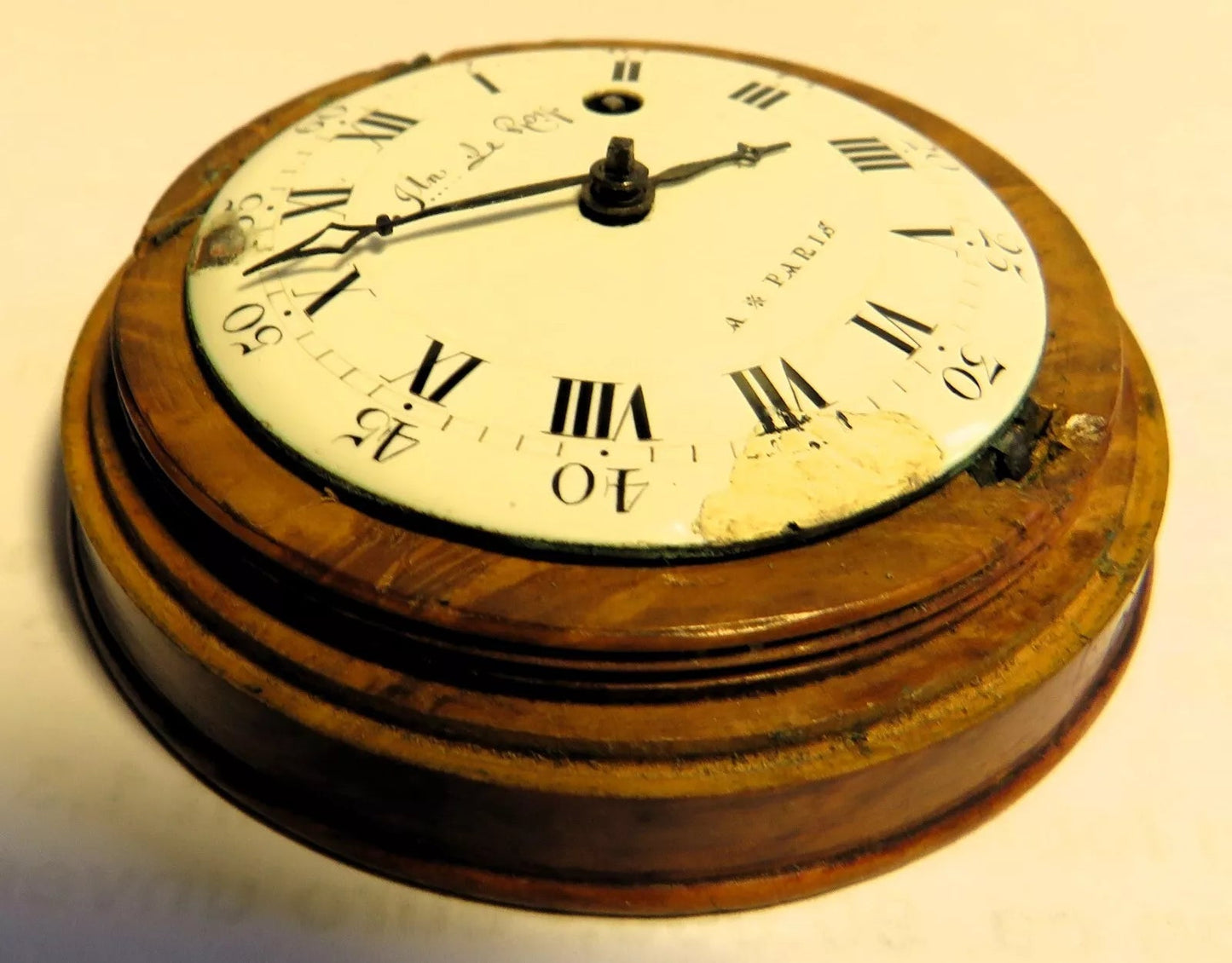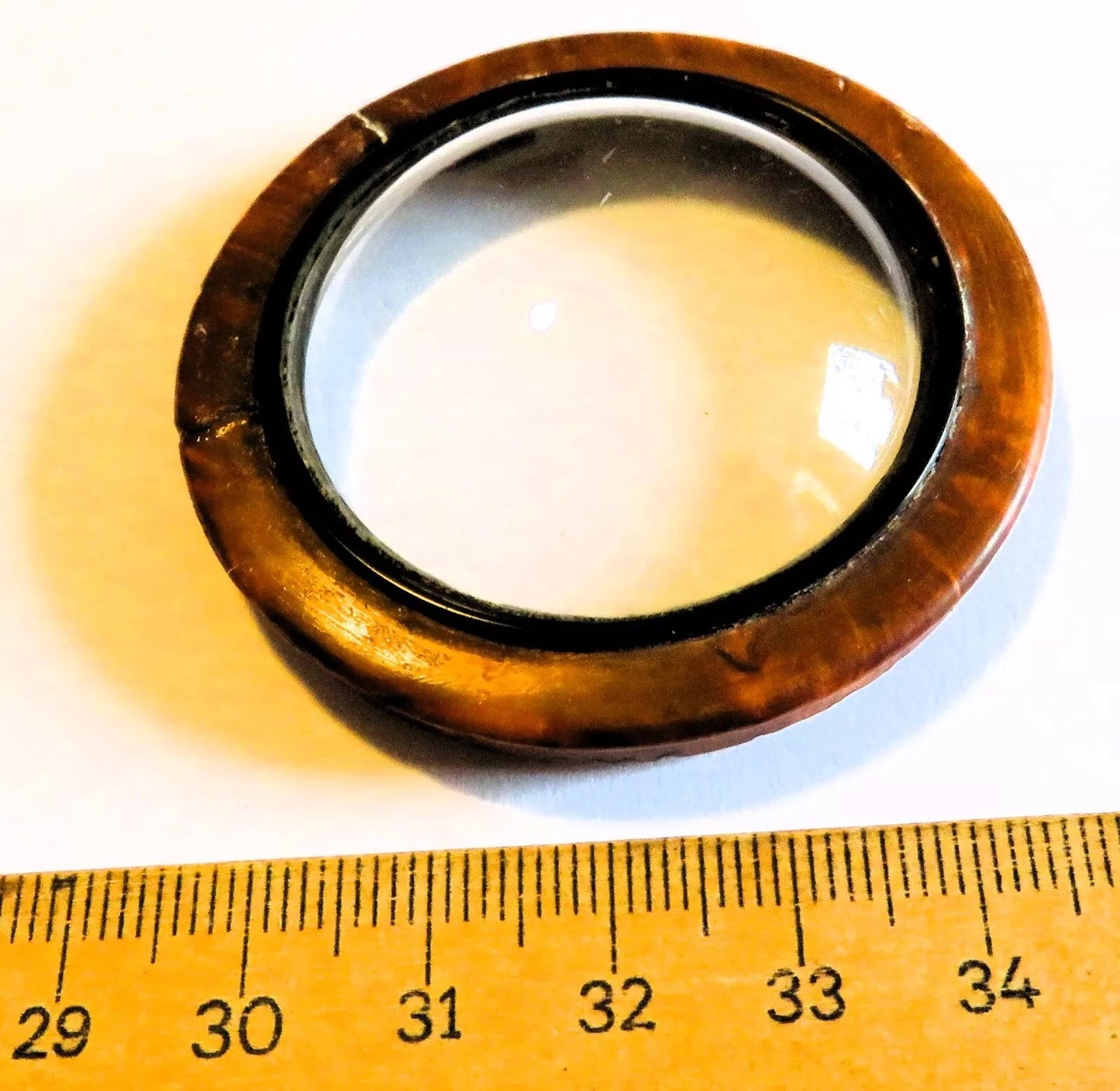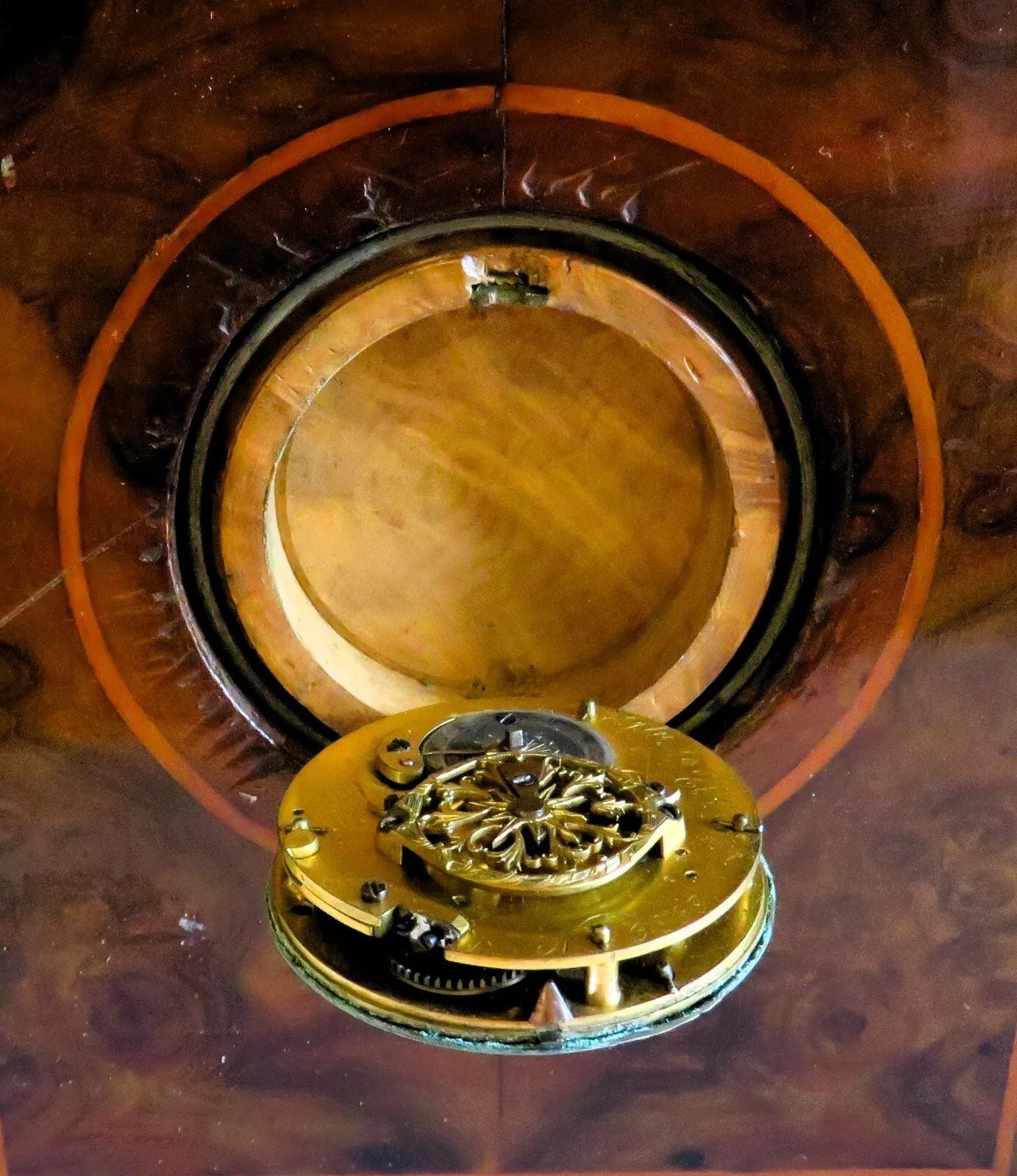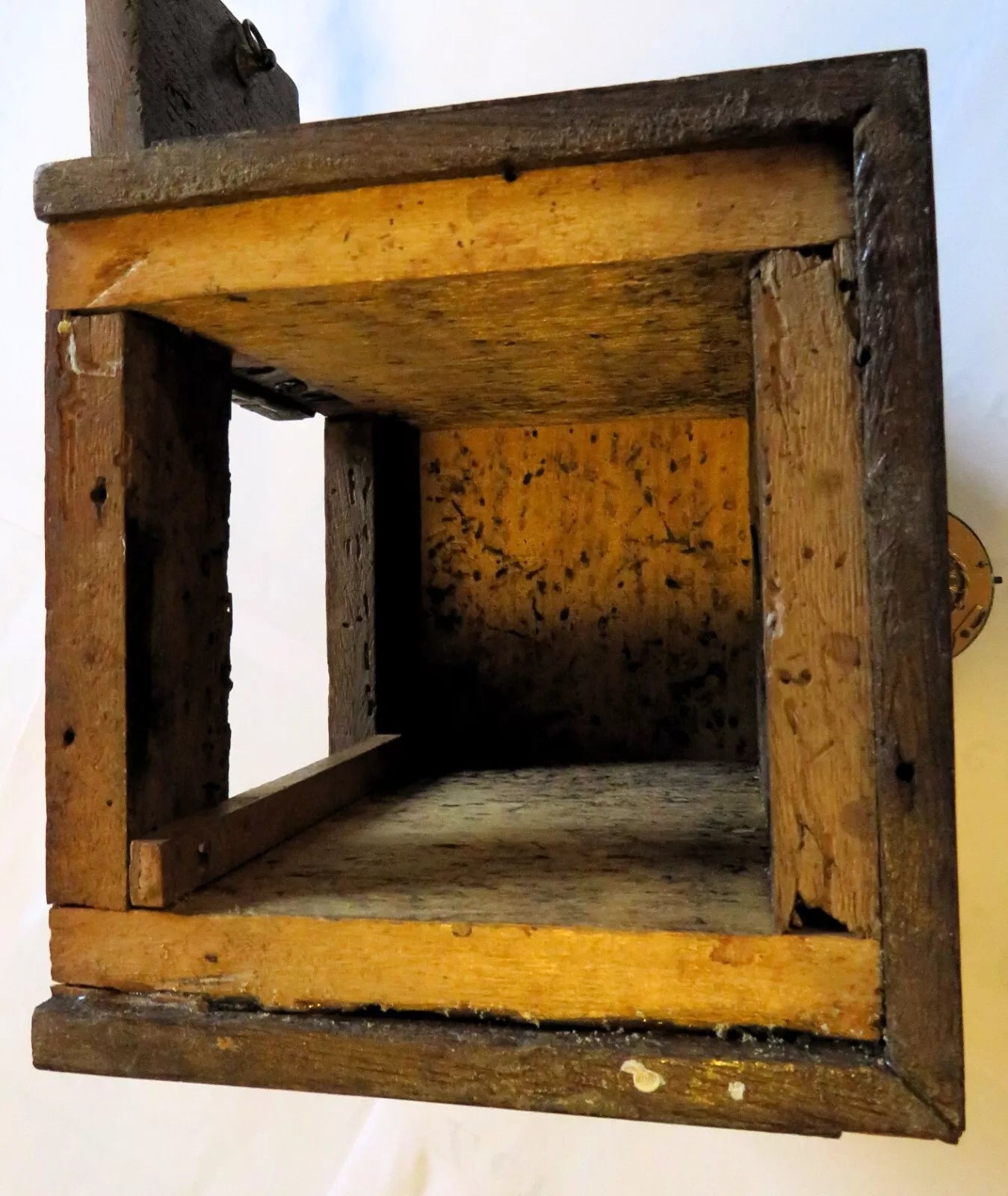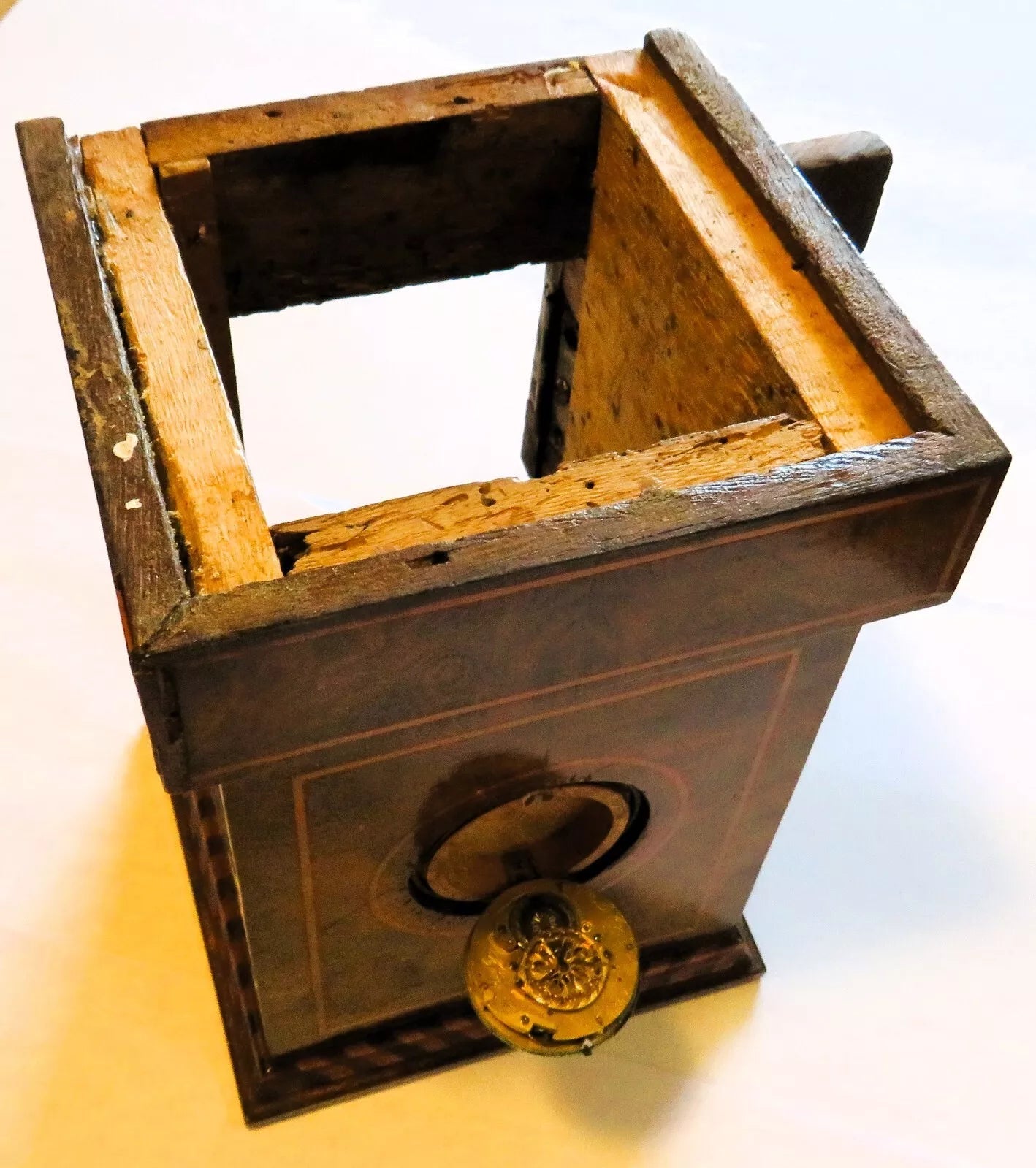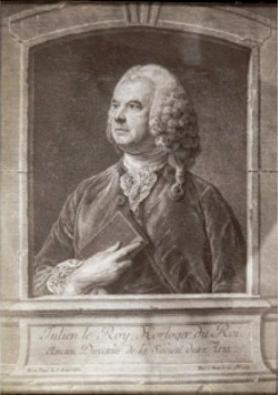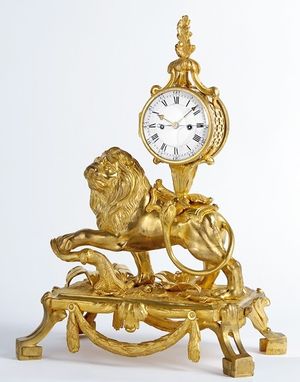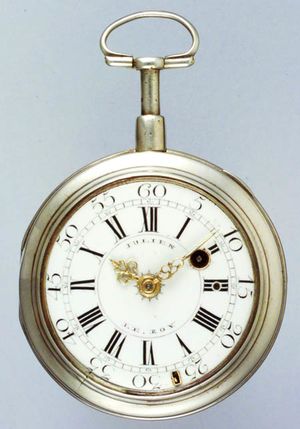Sammler-Uhren
Julien le Roy Paris Bronze Table Spindle Table Clock ca. 1720 15 x 15 x 31cm
Julien le Roy Paris Bronze Table Spindle Table Clock ca. 1720 15 x 15 x 31cm
Couldn't load pickup availability
Museum-quality bronze table clock artifact of one of the legendary French watchmaking geniuses and royal court clockmakers of the 18th century: Julien Le Roy a Paris
The largest and best museums worldwide are proud to present even one artifact from the hands of the French royal watchmaker, for example the Louvre, the Paul Getty Museum in California, the Detroit Institute of Art or even (still) in the Palace of Versailles itself, where it was probably delivered by the master himself over 300 years ago.
A true masterpiece of early watchmaking! The functional verge movement with chain and fusee, signed "Julien le Roy a Paris," is approximately 5 cm in diameter and is housed in a sealed wooden case, which is/was screwed into the base case. A removable wooden bezel with glass is then screwed or attached from the outside for winding.
The wood threads are clearly visible on both sides, but we can't say whether the screws are still working. We don't tinker or fiddle with watches for sale. We inserted/fitted it ourselves by gently turning it under minimal pressure.
Clockwork with base case, made of briar veneer and various woods, crowned by a silver-plated bronze sculpture of a horse
The expert does not need to be told that a bronze casting of this quality, various precious woods and briar veneer were the finest and most valuable materials of the era
Verge clock with chain on fusee, white enamel dial with Roman numerals for the hours, Arabic numerals in five for the minutes
Signed Jn Le Roy a Paris, burnished steel hands, fusee and chain movement, verge escapement, height 31 cm, width. 15 cm, depth. 15cm, the bronze horse with over 300g weight is inserted into the top with pins, currently (and without pressure ...) not 100% accurate, but as I said, we do not tinker with such artifacts
This magnificent artifact and piece of watch history runs continuously (modern key enclosed, accuracy not tested)
EZ: 2 - 3 - age-appropriate, complete and functional condition with normal signs of age or use, tarnished
History of the French court watchmaker Julien Le Roy (Source: Juwelier Zeitpunkt / Wikipedia):
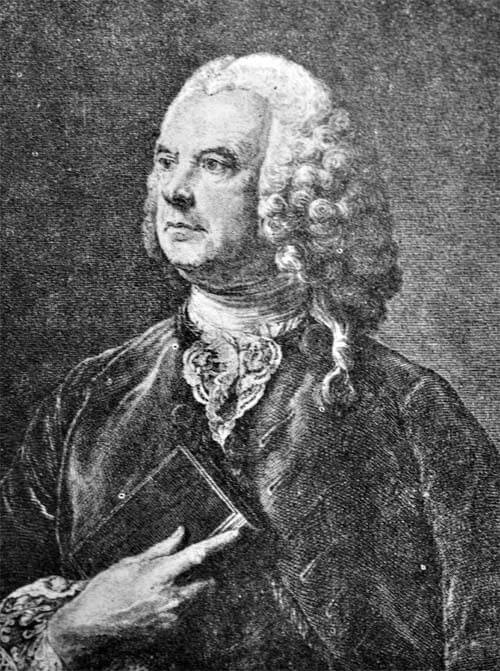
Julien Le Roy, born in Tours in 1686, built his first clock at the age of thirteen. In the same year (1699) he moved to Paris to begin his apprenticeship under Charles Le Bon. He became a master in 1713. Four years later, in 1717, he presented his equation clock at the Acadèmie-Royale de Sciences. In the following years he rose to the rank of member of the Paris Guild of Clockmakers and, in 1739, to the rank of court clockmaker under Louis XV, with his own rooms in the Louvrè. His work became extremely important for the clockmaking trade. Many of his colleagues immediately adopted many of his inventions and improvements. For example, he developed the adjustable piston for the escape wheel in verge clocks (“potence”), the “all-or-nothing safety device” for repeating striking mechanisms, and the repeating striking of pocket watches using springs instead of bells. Julien Le Roy also achieved considerable fame for his turret clocks. He later became director of the Société des Arts and, together with his eldest son Pierre, born in 1717, contributed articles on clocks to Diderot and d'Alembert's Encyclopédie.
Numerous examples of the clocks can be found in museums around the world, such as the Louvre in Paris and the Victoria and Albert Museum in London.
Julien Le Roy ran his workshop on Rue des Harlay in Paris. After his death in 1759, Pierre Le Roy took over his father's workshop.
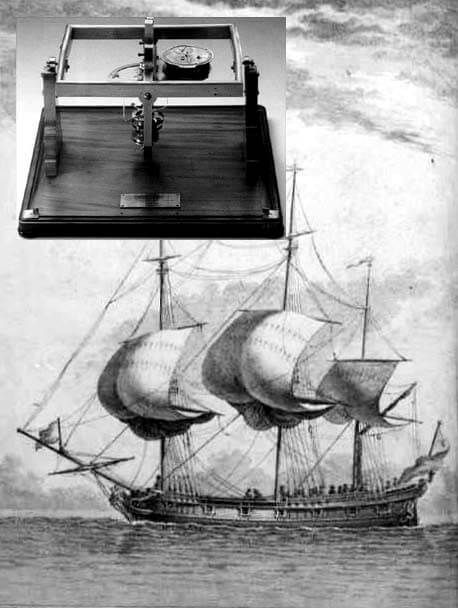
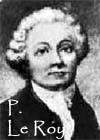
Le Roy, Julien
Parisian watchmaker , France
In 1699, Julien Le Roy went to Paris and completed his apprenticeship under Charles Le Bon . In 1713, he was appointed master, and in 1717 , he presented an equation clock to the Académie Royale des Sciences. In 1739 , he became royal clockmaker with his own offices in the Louvre. He developed the adjustable cock for the escape wheel of verge clocks ("potence"), the repeating strike of pocket watches using springs instead of bells, and the "all-or-nothing" safety mechanism for repeating striking mechanisms. His inventions and improvements were of such far-reaching importance that many watchmakers immediately incorporated them into their watches. Julien Le Roy was a director of the "Société des Arts" and, together with his son, contributed articles on clocks to the Encyclopédie by Diderot and d'Alembert. He was one of the most important watchmakers in France and was based in the Rue de Harley. Le Roy was particularly known for his turret clocks .
Julien le Roy was the brother of Pierre (Francois) le Roy (1687-1762) and Gatienne Le Roy, wife of François Hoguet, a master band-maker. Parents of François Hoguet and Gatien Hoguet . Sister Francoise Le Roy (1693-?) was married to master watchmaker Pierre Senard (ca 1690-1743) from Tours. Parents of Julien Senard . Le Roy was also the apprentice of Louis-David Carré who later married Thèrése Le Roy, a daughter of his brother Pierre Le Roy.
Julien Le Roy married Jeanne Delafond (ca.1682-1769) on March 4, 1715, in Paris, from this marriage was born:
- Pierre le Roy ( 1717 - 1785 ), watchmaker
- Jean-Baptiste Le Roy, ( 1720-1800 ) physicist, developed scientific instruments and was friends with scientist Benjamin Franklin.
- Julien-David Le Roy ( 1724 - 1803 ) architect, published the first surveyed designs of the Acropolis in 1758
- Charles le Roi ( 1726-1779 ) doctor and professor at the University of Montpellier.
Julien Le Roy died on October 15, 1759 in Paris, at the age of 73, and was living at the time in the Rue du Harlay, parish of Saint-Barthélemy.
Museums
Julien Le Roy's works can be found in the world's largest museums, including the Musée du Louvre , Cognacq-Jay, the Musée Jacquemart-André, Paris , and the Petit Palais in Paris. Other clocks can be found in the Château de Versailles , the Victoria and Albert Museum, and The Science Museum, previously at the Guildhall in London, Waddesdon Manor , Buckinghamshire. The Musée International d'Horlogerie in La Chaux-de-Fonds, the Bayer Museum of Time in Zurich, the Rijksmuseum in Amsterdam, the Koninklijke Musea voor Kunst en Geschiedenis in Brussels, the Museum für Kunsthandwerk, Dresden, the National Museum in Stockholm, the Musea Nacional de Arte Antigua , Lisbon, the JP Getty Museum in California, the Walters Art Gallery in Baltimore, and the Detroit Institute of Art.
